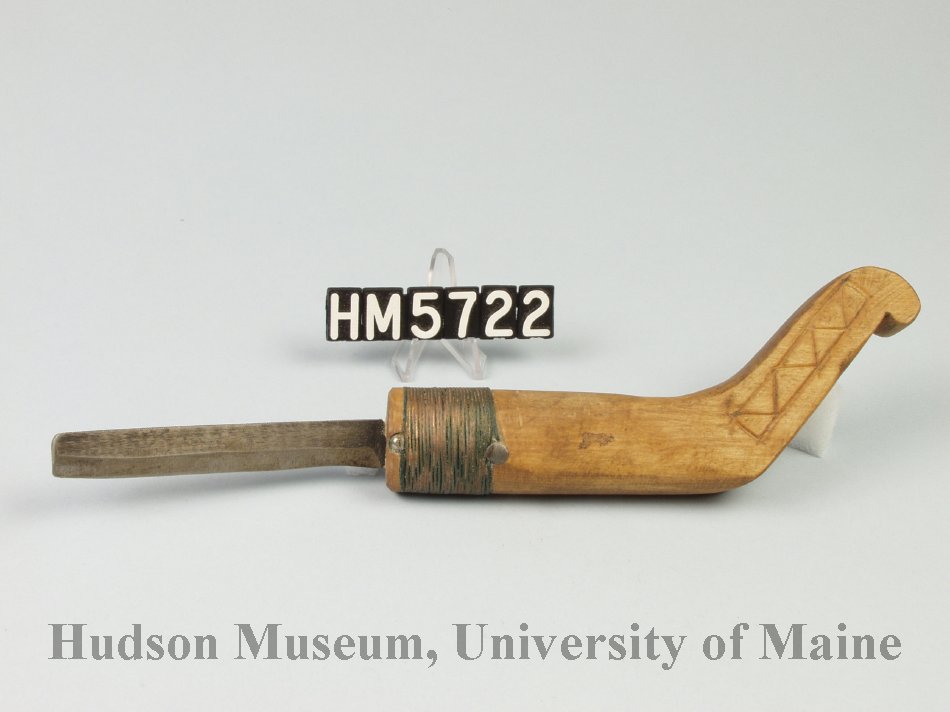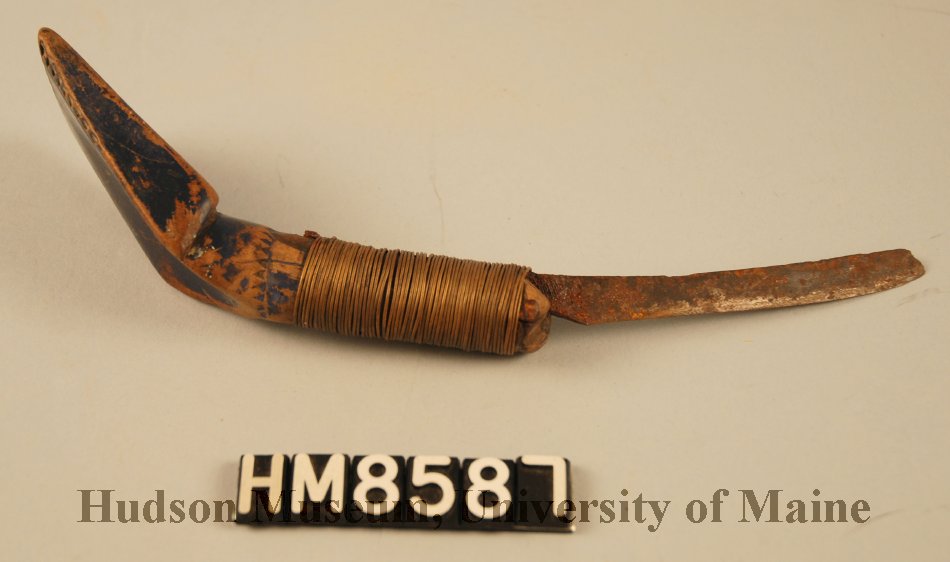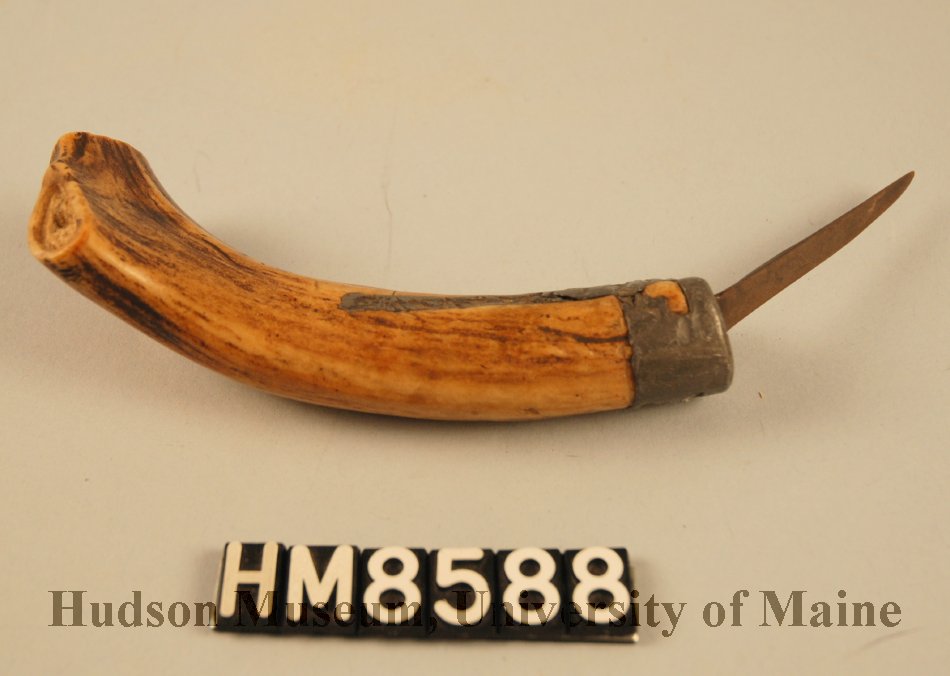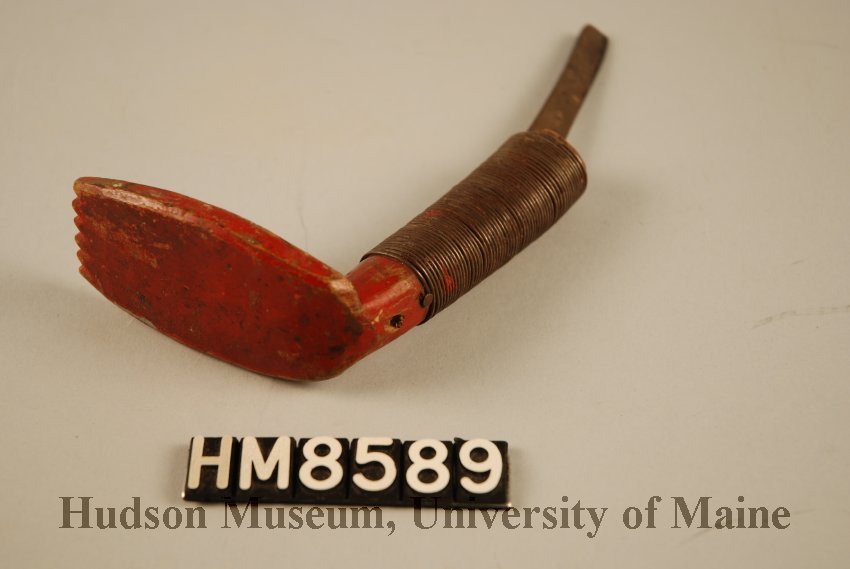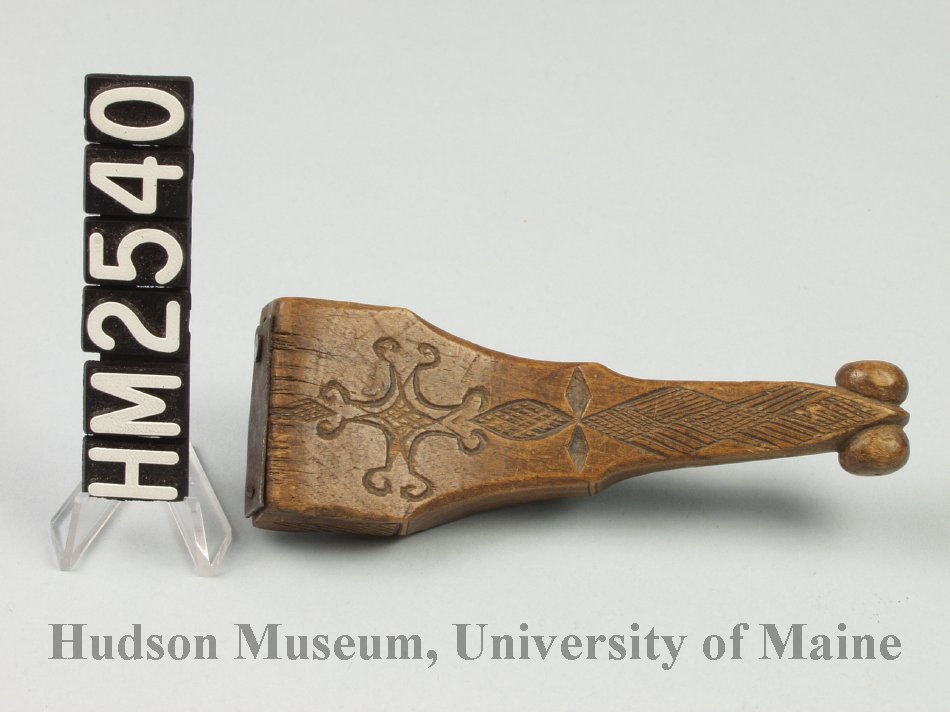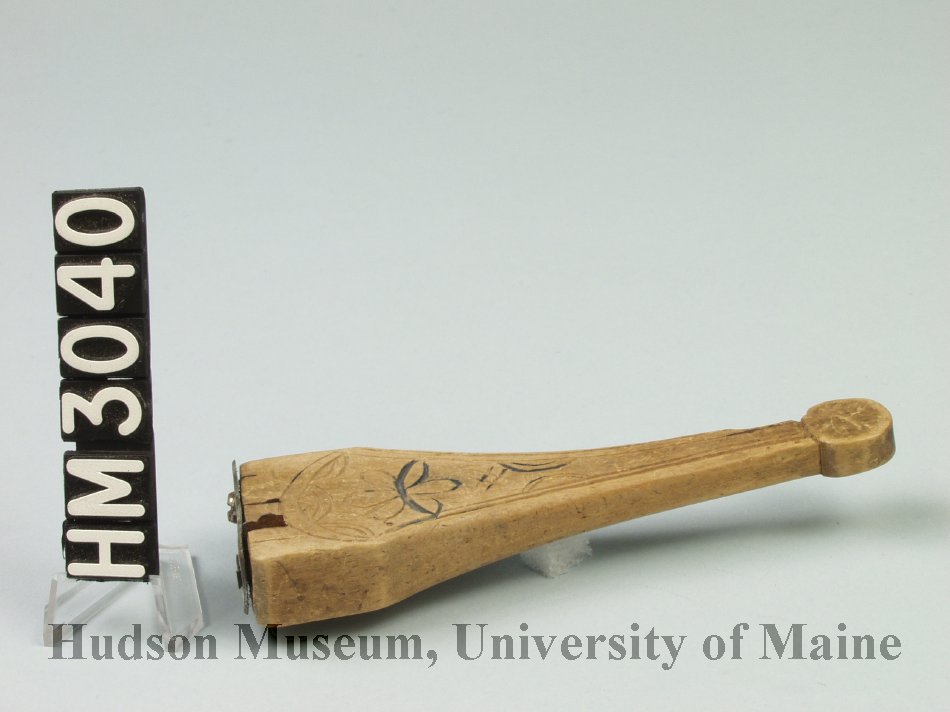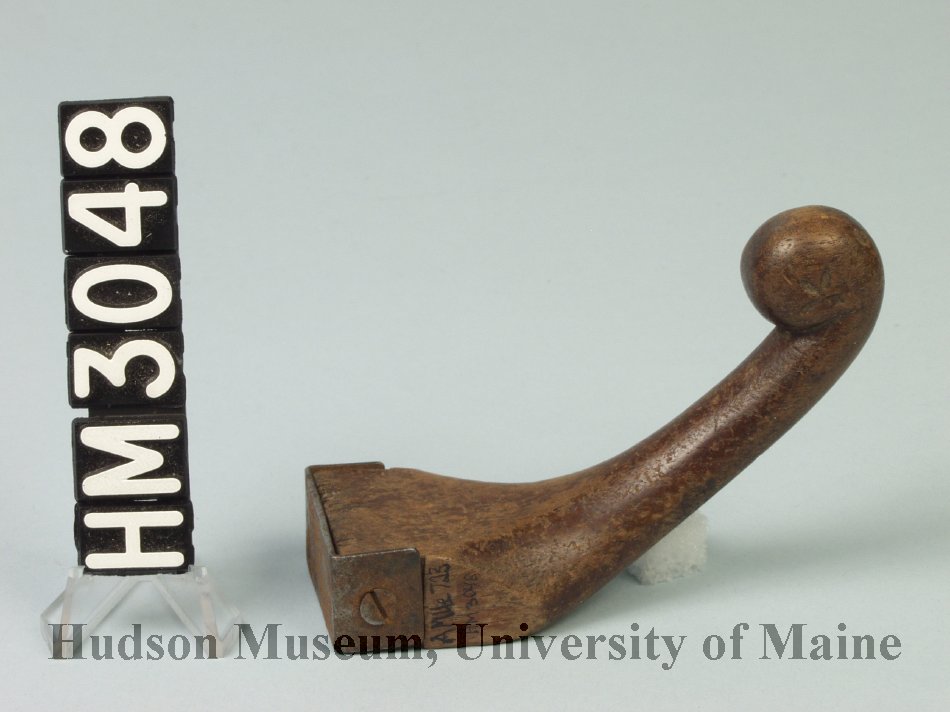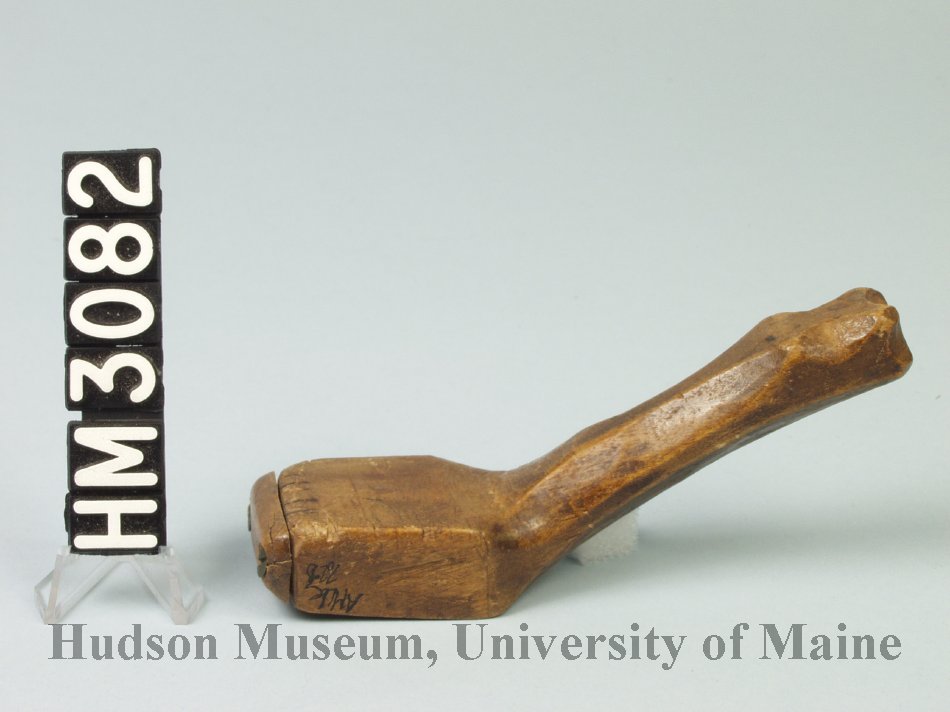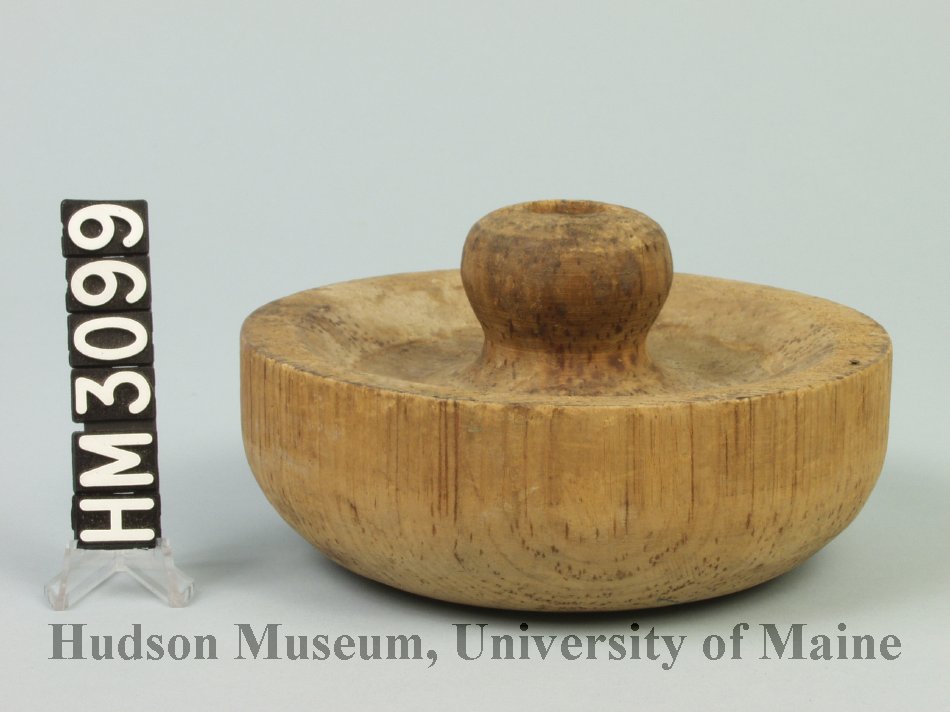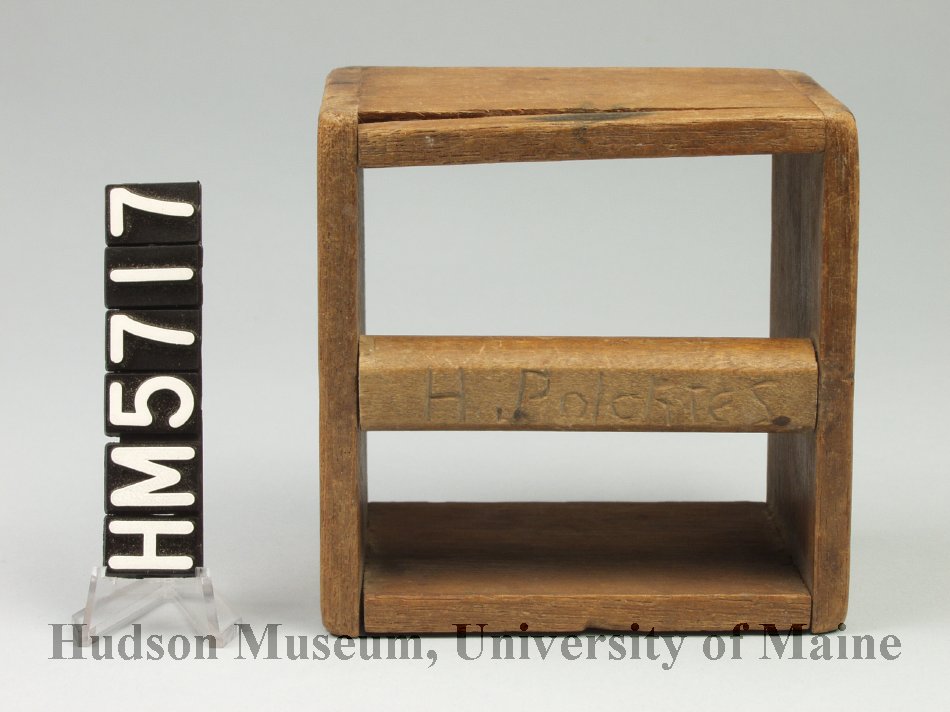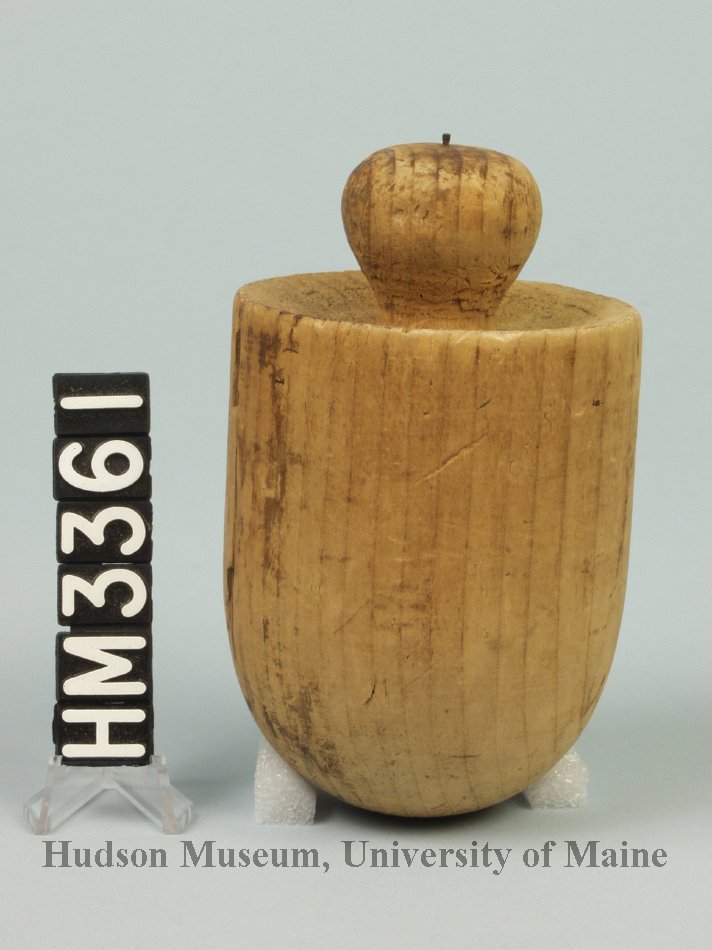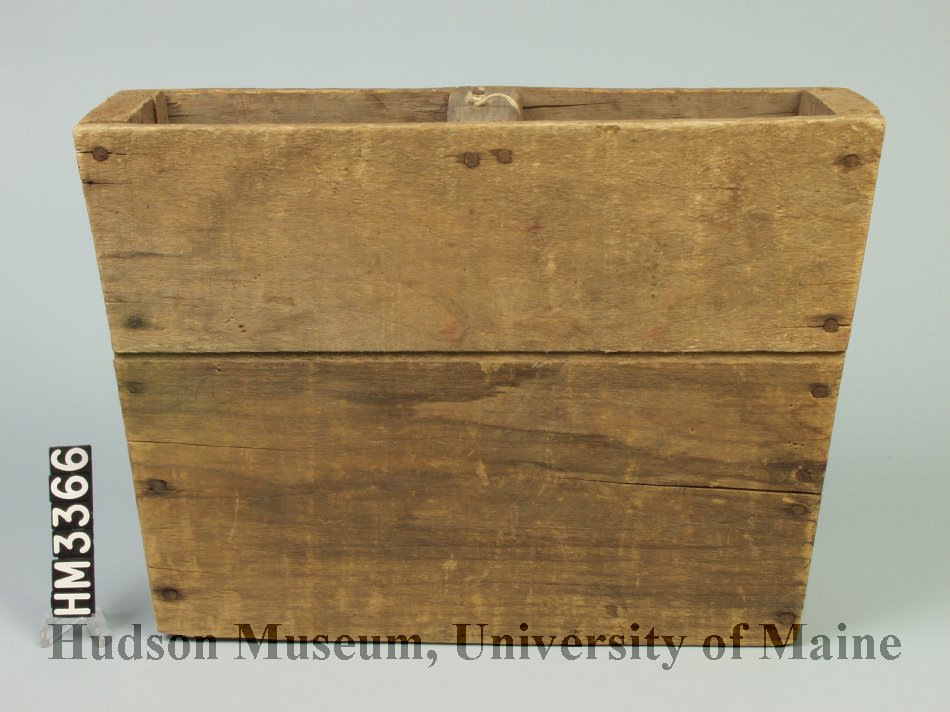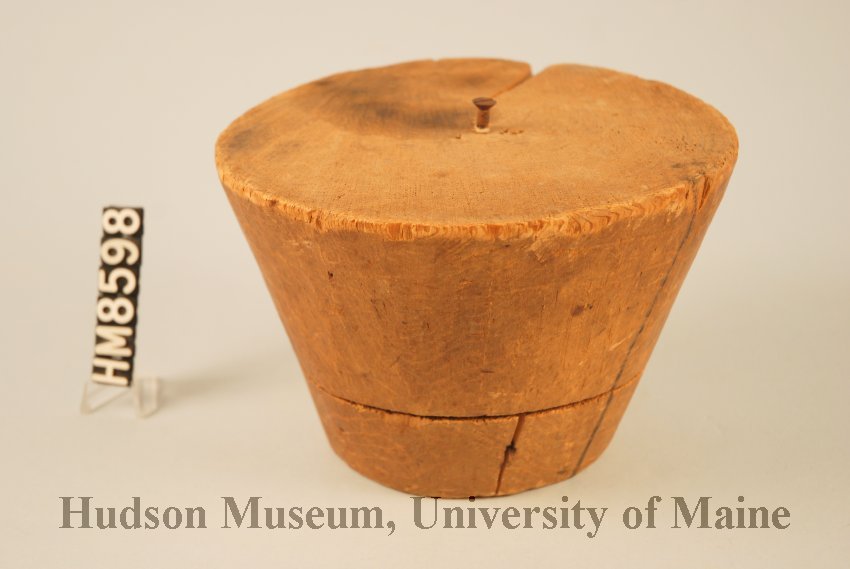Gauges And Molds
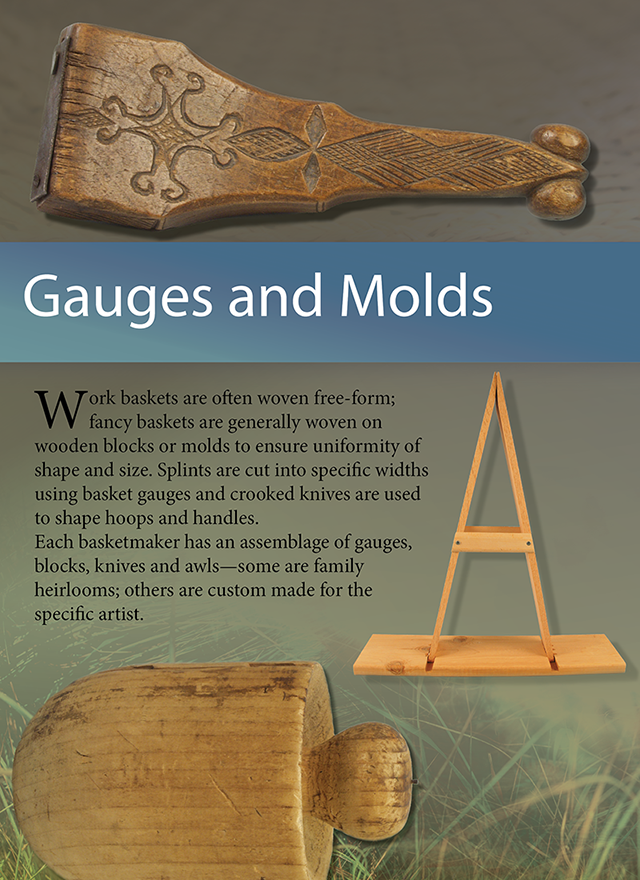
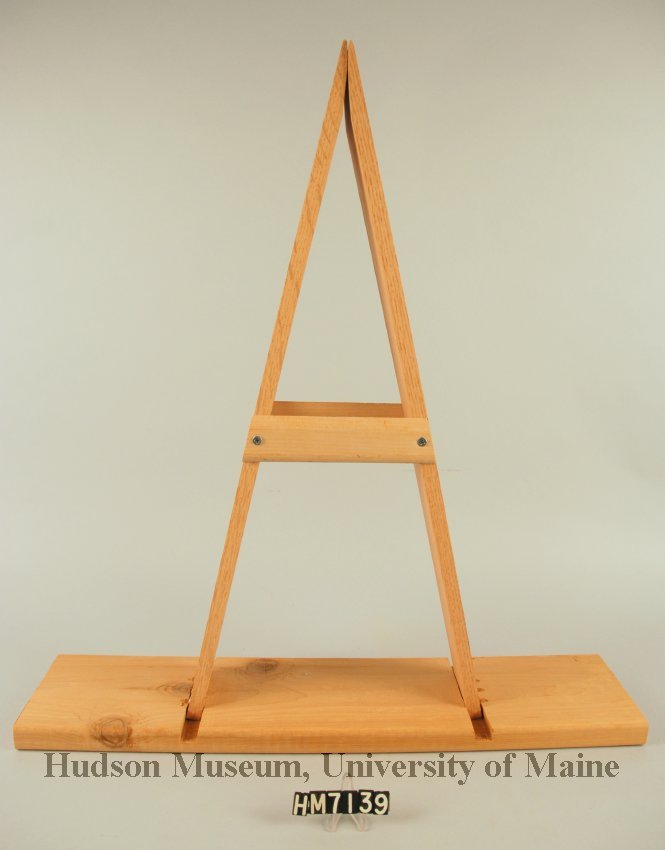 Ash Splitter By Rick Love
Ash Splitter By Rick Love
c. 2004
HM7139
Crooked Knives
c. 1900-1950
Crooked knives were among the tools commonly used by basketmakers to shape sticks of
ash and to make sturdy handles and rims for baskets.
Penobscot Splint Gauges
c. 1880-1930
Basketmakers use hand held splint gauges to divide basket material into pieces ranging from
1/32” to 3/4” widths. Gauges are made with a wooden handle and clock springs were set at regular
intervals to split the strips of basket material. Early gauges were elaborately decorated with chip
carving and relief carved designs. Later gauges tend to be plainer with little or no ornamentation.
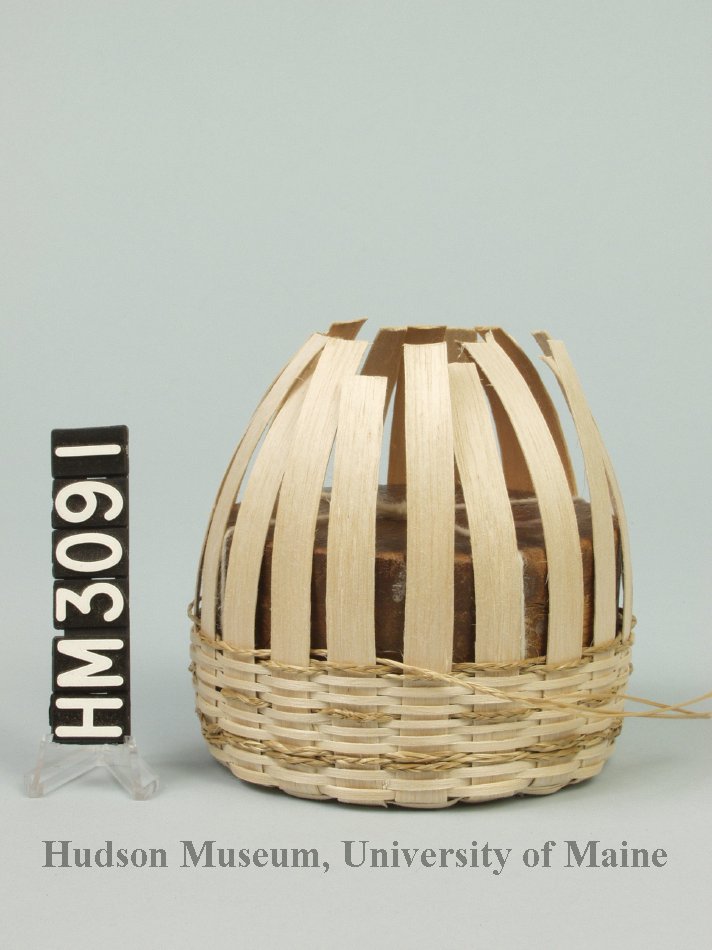 Button Basket Start
Button Basket Start
By Jennifer Neptune, Penobscot
1995
HM3091
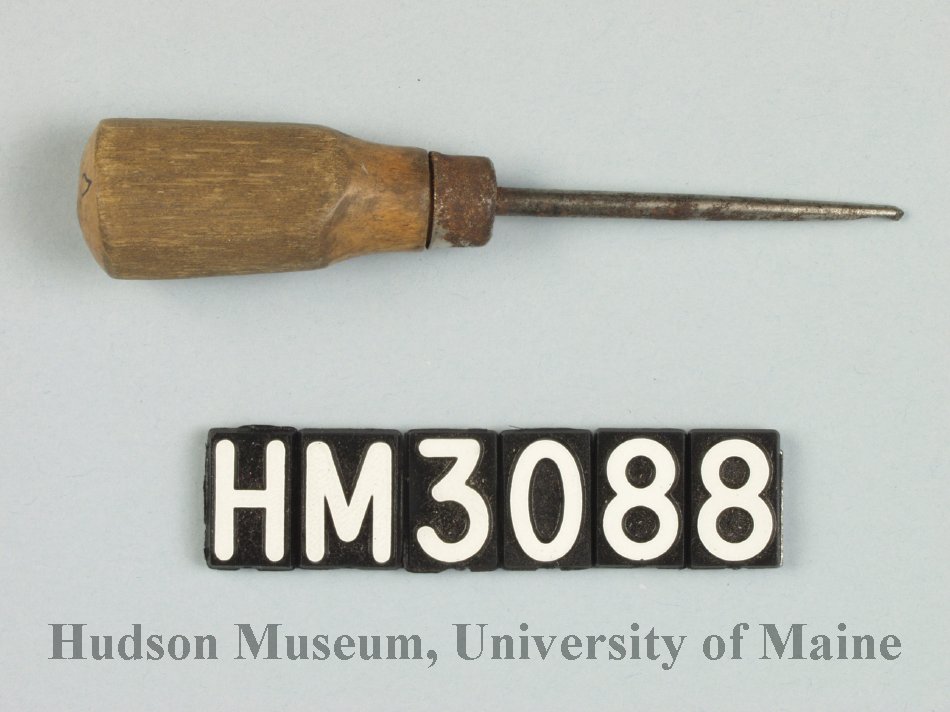 Awl
Awl
c.1940
HM3088
HM3099; 5717; 3361; 3366; 8598
Basket Blocks or Molds
c. 1900
To ensure uniform shapes and sizes, especially for fancy baskets, basketmakers attached their
basket start to blocks or molds. They continued to weave up the basket sides while their work was
attached to the block. The piece was removed from the block to finish the rim. Forms represented
here were used to make sewing baskets, tatting baskets, curly bowls, shoppers, and handkerchief
baskets.

